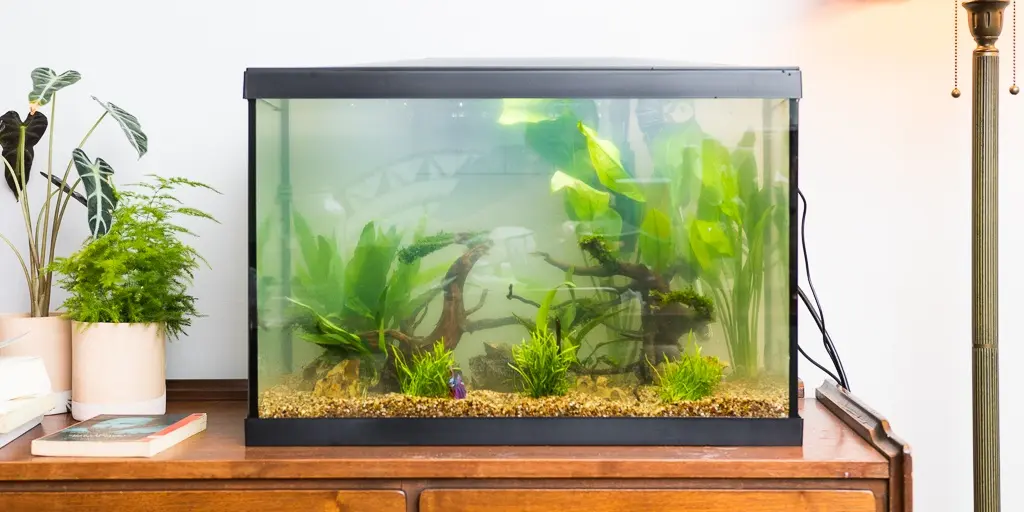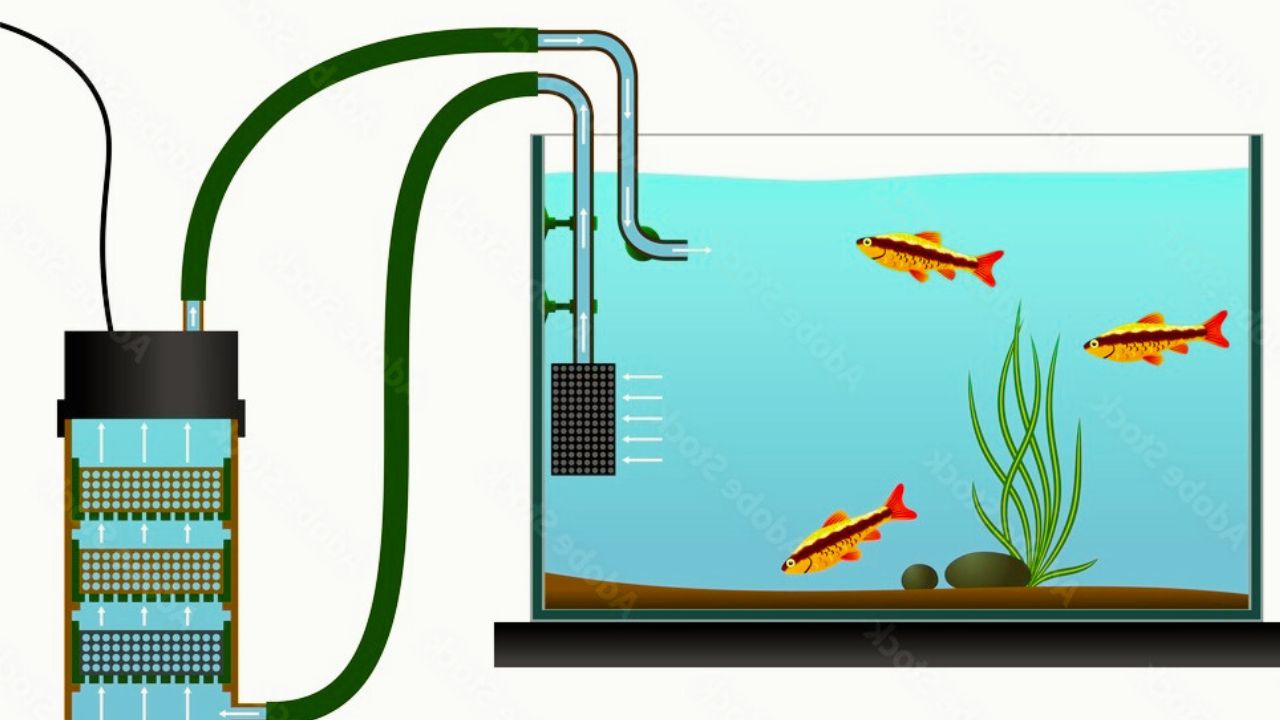Having a best aquarium heater controller is essential just like having a reliable heater for regulating water temperature in any aquarium. Sometimes heaters get over or undershoot the desired temp of aquarium. This can stress or even kill fish. That’s where aquarium heater controllers come in action.
Heater controllers work alongside your existing heater to monitor and keep the range within a very narrow safe range. This prevents the fluctuations that can stress or harm fish. In this guide, we’ll start by explaining how heater controllers work. We’ll then discuss key benefits of using one on your tank. Later, we’ll review top heater controller models and provide tips for choosing the right unit and using it properly in your aquarium.
How Do Aquarium Heater Controllers Work?
Heater controllers consist of two components – the controller unit itself placed outside the tank, and a temperature probe inside the tank. You simply connect your existing heater to the controller rather than plugging it directly into the wall. The probe constantly monitors the exact water temperature and relays this to the controller.
You set your target temperature on the unit. When the probe reports temps straying too high or low, the controller automatically switches the heater on or off to maintain your set point. This allows much tighter regulation within around 0.5 degrees vs standard heaters. The controller overrides inconsistent readings from the heater’s built-in thermostat for precision control. This prevents the sudden temperature swings than can stress or shock fish.
Benefits of Using an Aquarium Heater Controller.
There are several key benefits that make a heater controller a worthwhile investment for any aquarium:
- Precise Temperature Regulation – The controller maintains temperatures within a very narrow safe range vs standard heaters with wider fluctuation.
- Prevents Overheating – If a heater malfunctions and overheats, the controller will shut it off before harming fish. A great failsafe.
- Peace of Mind – Owners don’t have to constantly fret over unstable tank temperatures and can relax knowing their fish are in good hands.
- Works With Any Heater – The external controller can regulate almost any brand/size of existing heater you have.
- Emergency Alerts – Some controllers feature audible/visual alerts if temperatures veer out of the set range, allowing quick correction.
By understanding these benefits, it’s clear why an aquarium heater controller is a must-have accessory for any tank owner serious about fish health and safety. Now let’s look at how to pick the best one for your needs.

Choosing the Best Aquarium Heater Controller.
With more controllers available these days, Choosing best aquarium heater controller could be frustrating. Use the following criteria to select the right model:
- Heater Compatibility – Ensure the controller is rated for your heater’s wattage and type.
- Temperature Precision – Accuracy within 0.5 degrees Fahrenheit is ideal. Look for a narrow control range.
- Safety Features – Alerts for overheating, auto shutoff, and replaceable fuses prevent tank disasters.
- Ease of Use – Simpler setup with clear programming instructions and intuitive controls.
- Durability – Rigid housing and waterproof design are musts for equipment going on aquariums.
- Cost – Prices range widely from $30 into the $200s for advanced systems. Set a budget.
Single and Dual-Stage Heater Temperature Controller.
There are two main types of aquarium heater controllers – single-stage and dual-stage. Understanding the difference allows you to choose the best system for your tank.
Single-Stage Heater Controllers
A single-stage heater controller uses a simple on/off regulation method. You set a single desired temperature on the controller. When the water temperature falls below this set point, the controller switches the heater on to warm up the tank. Once the probe reports the temp reaching the set level, the controller shuts the heater back off.
This creates a tight temperature range around the single set point, as the heater is constantly switched on and off to maintain it. Single-stage controllers are ideal for most freshwater aquariums that require consistent temps. They are also more affordable and straightforward to operate.
Dual-Stage Heater Controllers
A dual-stage or dual-output controller allows you to run two devices independently. For example, you could control a heater on one output to warm the tank when needed. On the second output, you could connect a fan or chiller to cool the water if temperatures begin exceeding the set point.
Dual-stage regulation is helpful for tanks requiring tighter temperature control like reef systems. The dual outputs provide both heating and cooling as needed. You can also set different high and low temperature thresholds for each output. This allows wider temperature fluctuation while still keeping the tank within safe limits.
Dual-stage controllers cost more but offer flexibility for tanks needing both heating and cooling. For most freshwater setups, a simple single-stage controller will sufficiently maintain stable temperatures.
Top Aquarium Heater Controller Reviews.
After extensive testing and research, these are our reviews for best aquarium heater controllers:
#1. Inkbird ITC-306T – Best Overall

The Inkbird ITC306T is an affordable, no-frills aquarium heater controller. It features dual outputs to control two heaters simultaneously, making it a good option for larger tanks using multiple heating units.A unique aspect of this controller is the ability to set two separate temperature points for day and nighttime heating cycles. The easy-to-read dual LCD displays clearly show both the set temperature and actual tank temperature.Temperature can be precisely dialed in anywhere from -58°F to 210°F using the simple increase, decrease, and set buttons. Two indicator lights visually show when the heaters are activated.
An integrated alarm system alerts users if temperatures stray outside the set range, an important safety feature. The ITC306T is compatible with most submersible aquarium heaters up to 500W each.Downsides are that it does not include the actual heater unit and cannot control cooling fans. Those looking for WiFi-connectivity will need to look at more advanced controllers.
Overall, the Inkbird ITC306T controller provides reliable, budget-friendly temperature regulation for larger tanks that need dual heater control and day/night temperature flexibility. Just pair it with compatible heaters, and it will keep tank temperatures stable.
Pros
- Budget-friendly price point
- Dual heater control for larger tanks
- Dual temperature settings for day/night variance
- Wide -58°F to 210°F temperature range
- Heater indicator lights
- Easy to use temperature buttons
- Alarm alerts for abnormal temp changes
- Compatible with most heaters
Cons
- Does not include heater, must provide your own
- Only controls heaters, cannot regulate cooling fans
- Lacks advanced features like WiFi app control
#2. Hygger 200W Titanium Aquarium Heater
Introducing the Hygger Aquarium Heater and Controller, a reliable choice for your aquarium setup. This unit features a shatter-proof titanium heater, suitable for both freshwater and saltwater tanks, with adjustable wattage options.
The controller includes an audio alarm for temperature alerts, an LED display for monitoring water temperature, and a range of 32 to 104 degrees Fahrenheit. It efficiently activates the heater to maintain your set temperature.
Compatible with various heater brands, the unit lacks dual-channel control for fans, making it ideal for colder regions where heating is a primary concern. Note that it requires manual adjustment as it’s not Wi-Fi-compatible, but the process is simple with the user-friendly up and down buttons.
Pros
- Durable
- Customizable Wattage OptionsTemperature Control and Monitoring
- Compatibility
Cons
- Single-Channel Functionality
- Non-Wi-Fi Compatibility
#3. Inkbird ITC-308 Digital Temperature Controller

The Inkbird ITC308S, a top-notch dual-channel controller that streamlines temperature management for your aquarium. With separate outlets for a heater and cooling fan, it automatically activates the appropriate device based on your desired temperature. The controller displays both current and set temperatures on its screen, covering a range from -40 to 212 degrees Fahrenheit.
Equipped with high and low-temperature alarms for safety, the unit alerts you to any drastic temperature changes, allowing prompt action to protect your fish. It’s important to note that this controller doesn’t include a heater or fan, requiring separate purchase, but its overall value justifies the investment.
While lacking Wi-Fi compatibility, the controller is easily adjustable with three buttons (up, down, and set). Two red lights indicate the operating mode, ensuring you can quickly assess whether the fan or heater is active.
Pros
- Premium Design
- Enhanced Heating Performance
- Secure and Automated Circuitry
- Suitable for Larger Aquariums
Cons
- Bulkier Design
#4. WILLHI WH1436A Heater Controller
This basic aquarium heater controller for aquarium lacks durability but provides simple temperature regulation. Just plug it into an outlet and connect your heater. The controller constantly monitors water temperature, displaying readings on its digital screen. It turns the heater on or off as needed to reach and maintain the set temperature. Setting the desired temperature is straightforward – hit “set”, adjust the temp, and hit “set” again. The wide temperature range can accommodate any home aquarium. Accuracy is impressive at +/- 0.5°F. The compact size doesn’t take up much space. Downsides are it’s not waterproof and long-term durability is questionable.
Overall, this no-frills controller provides reliable heating control in a compact, easy-to-use package. Just don’t submerge it, and supplement with a more durable controller if using long-term. For basic temperature regulation on a budget, it’s a decent option.
Pros
- Simple function
- Nice display
- Compact
- Accurate
Cons
- Cannot get it wetD
- urability issue
#5. RANCO ETC-111000 Digital Aquarium Heater Controller.
The Ranco temperature controller by Robert Shaw is an industrial-grade unit suitable for DIY aquarium heating/cooling. It has clear wiring instructions and manuals available for download. This particular model is single-stage, so it can control either a heater or chiller but will need rewiring to switch between the two. Ranco does offer a dual-stage version that can handle both simultaneously. Ranco controllers are praised by technicians for reliability and quality manufacturing. They are more widely available than competitors like Johnson Controls, often at a lower price point.
For aquarists looking to build their own temperature control system, the Ranco controller provides industrial-level durability and accuracy. The availability of wiring guides makes these units easy to integrate into a custom setup. Ranco’s reputation and affordability make it a top choice for DIY temperature control.
Pros
- Premium design
- Additional heating performance
- Secure and automated
- Suitable for large aquariums
Cons
- Expensive
- Bulkier Design
Tips for Setting Up and Using an Aquarium Heater Controller.
Once purchased, proper setup is crucial:
- Check manual for model-specific instructions.
- Fully submerge probe in tank, keep controller housing dry outside.
- Attach heater power cord to controller, not wall outlet.
- Program your desired tank temperature and other settings.
- Give 24 hours to stabilize temperatures before adding fish.
- Place probe in location with good water flow for accurate readings.
- Clean probe regularly by rinsing in old tank water during water changes.
Also Read: Best Canister Filters For Aquariums.
Conclusion
For precise aquarium temperature control, a separate heater controller is a must-have accessory. Models like the Inkbird IHC-200 regulate temperatures within +/- 0.5°F to keep fish safe and comfortable. Features to look for include heater wattage compatibility, tight temperature control, safety alerts, and durable construction. Proper setup like submerging the probe and programming the desired temp will have you reaping the benefits in no time. Investing in a quality heater controller pays dividends by removing temperature fluctuation stress on fish. For any aquarium owner, this is one accessory really worth having in your toolbox.




